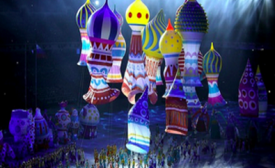india
India has expressed anger over the US Justice Department's decision to re-indict one of its diplomats on visa fraud charges and allegations she lied about how much she paid her housekeeper.
A new exhibition at the National Museum of Natural History in Washington celebrates Indian-American culture, history and experiences, as Diksha Basu reports. When you enter Beyond Bollywood: Indian Americans Shape the Nation, you are greeted by loud Hindi film music and a vinyl record from Mughal-E-Azam, one of the most iconic Bollywood films.
Asia marked International Women’s Day on Saturday with little to celebrate. Despite mooted reforms, the region’s slow progress has been estimated to cost up to $50 billion a year in lost economic opportunities alone, in addition to huge social costs.
On Thursday a senior Indian official appeared to endorse Russia’s position in Ukraine in recent days, even as Delhi urged all parties involved to seek a peaceful resolution to the diplomatic crisis. When asked for India’s official assessment of the events in Ukraine, National Security Adviser Shivshankar Menon responded.
CPD Conversations presents an interview with Richard Wike, Director of Global Attitudes Research at the Pew Research Center. Wike discusses the positive attitudes both Indians and Americans have of each other and that even when the global perception of the United States was significantly lower during the George W. Bush administration, Indians still held a positive view of the U.S.
Dmitry Fedorovich Mezentsev, Secretary-General of the Shanghai Cooperation Organisation(SCO), visited New Delhi on a two day visit from February 23 to 25. The visit failed to attract any meaningful media attention. Nonetheless, the visit is significant and highlights the importance of the SCO in India’s larger relations with Central Asia and South Asia.

China, the United Arab Emirates, Indonesia, and Russia are now known globally for their economic strength. But what about their cultures?







